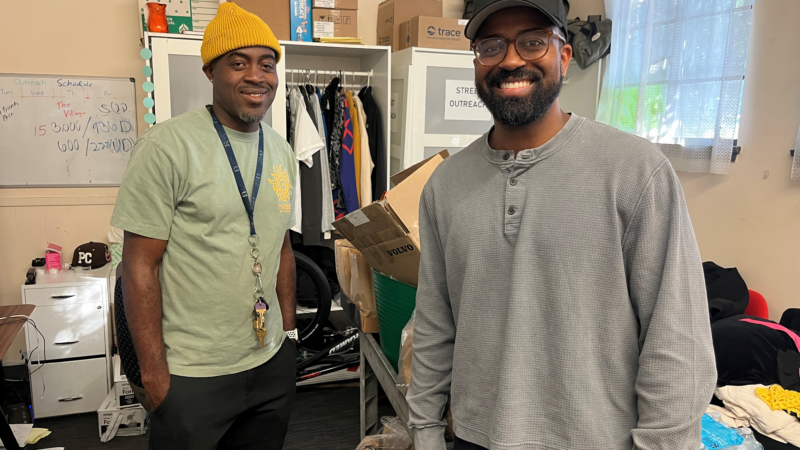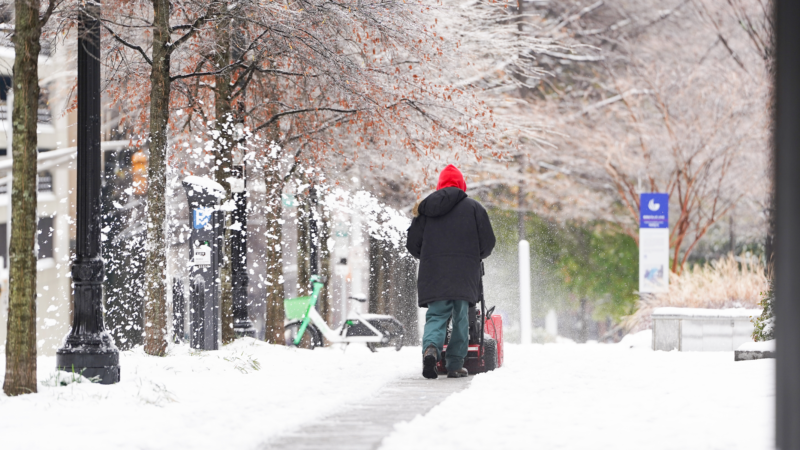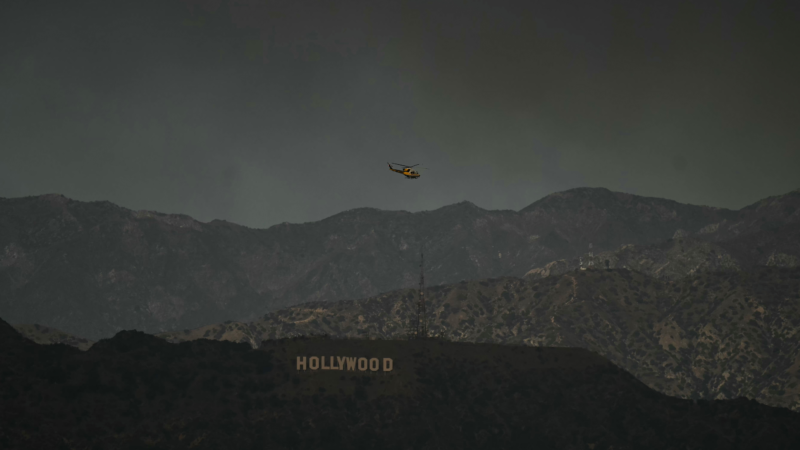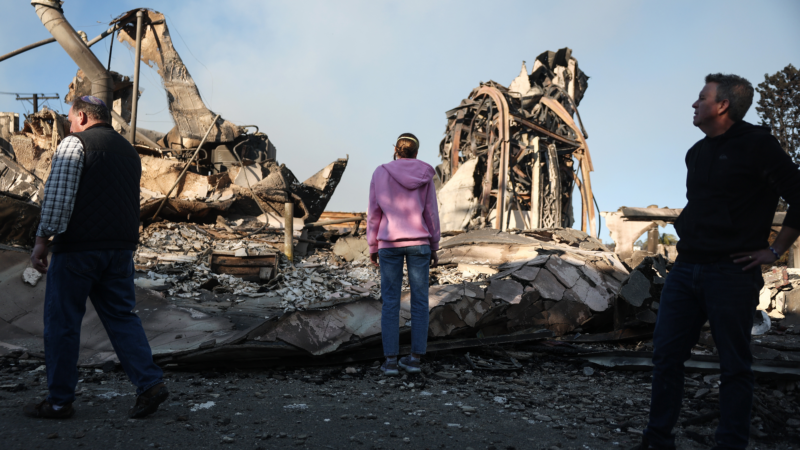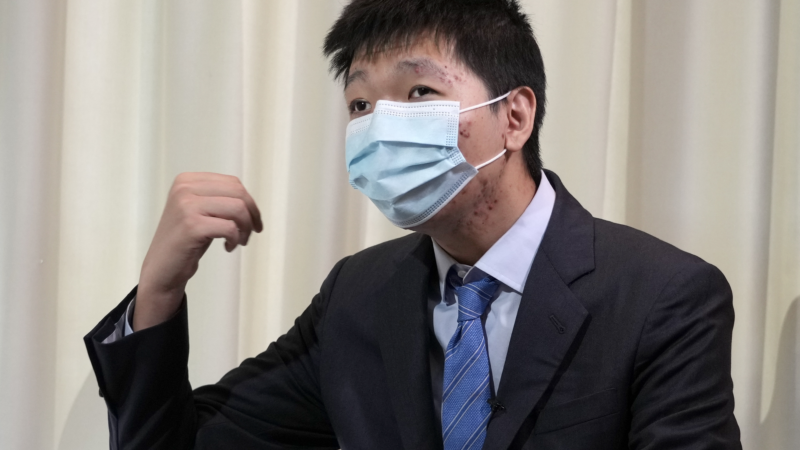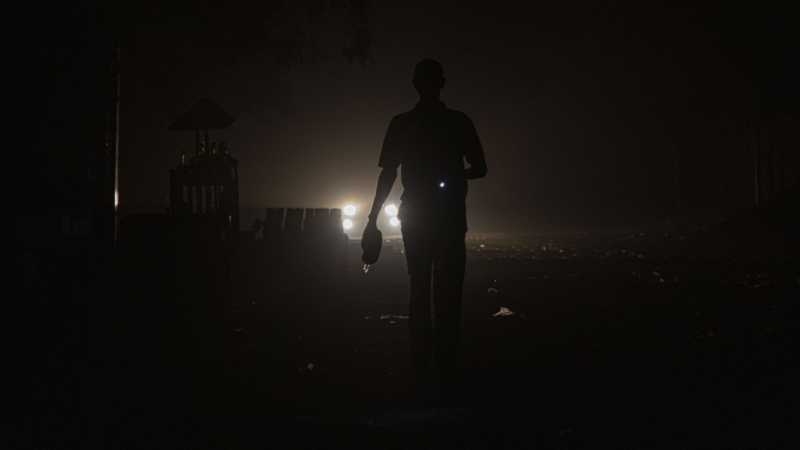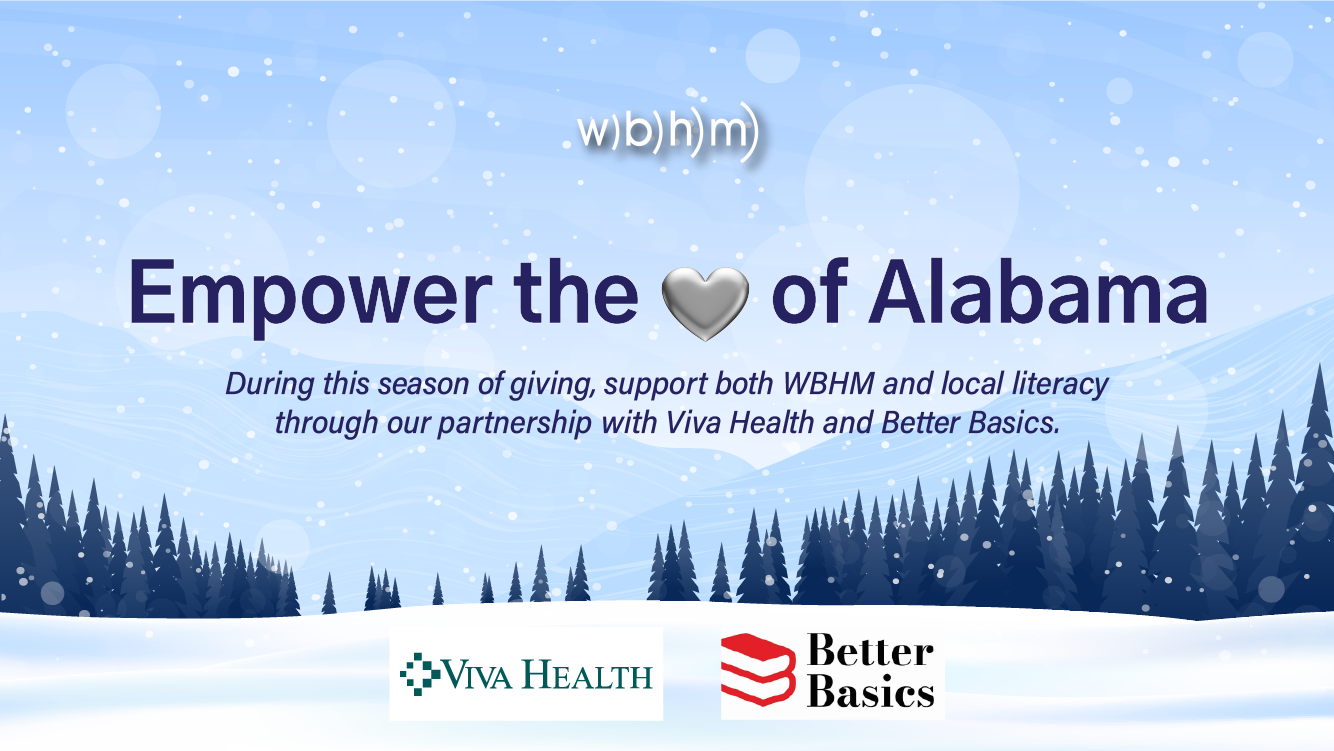An army of community volunteers springs into action as LA fires rage
As swiftly as fire evacuation orders went into effect across Los Angeles County, so did the community disaster recovery effort. At the Anderson Munger Family YMCA in LA’s Koreatown, a central hub for donation drop off and distribution, a steady stream of supplies and volunteers offering helping hands spilled out onto the sidewalk.
“It’s wild. There’s people out here that have just created a chain. And we’ve just been handing off and loading cars,” said Sabrina Parnia, one of the volunteers who sprang into action this week after devastating wildfires broke out.

Once she learned about this effort by the community group Ktown for All, Parnia took the week off from work, helping direct the other volunteers who showed up ready to help. The central location is a crucial node in a volunteer-powered supply chain — tied together with people from across the state. This location has collected food, clothing, assorted snacks for first-responders, and whatever local businesses have been willing to give.
“There was someone that was dropping off protein shakes,” Parnia said. “He runs a protein company and was just dropping off a van full of protein shakes. It’s phenomenal. And baby protein shakes!”
These centers aren’t just responsible for collection. YMCA is also leveraging its network to distribute supplies across partner community organizations, shelters and evacuees in need of supplies.
“All the hands and bodies that are coming here with U-Haul trucks [or] their vans, because we don’t have vehicles to transport these items, they are like, ‘What do you need?’ ” said Rae Jin, executive director of the Anderson Munger Family YMCA.

Nearby, in downtown Los Angeles, Covenant House California provides shelter year-round for displaced people ages 18-24.
“This is the age group that we can still support and prevent homelessness,” says Anthony Conley, director of support services at the nonprofit.
He said young people who have streamed in after the fires broke out are taking up all 104 available beds.
“With the air quality, it becomes a little bit harder on folks. So definitely a lot of the shelters within the area are really looking out for young people and adults that are having respiratory issues,” Conley said.
Covenant House put out a call for sandwiches and bagged lunches. Peanut butter and jelly is the MVP.
“What people don’t realize is a lot of vegans are out on the street, as well. So peanut butter and jelly sandwiches are a good substitute for that. It’s easier on the stomach. It lasts a little bit longer,” Conley said.

Covenant House and the YMCA are but two of the many community organizations with efforts under way to support the area after Los Angeles’ worst — and likely costliest — natural disaster in history.
“I’m grateful because we just said we’ve got to do this, and the next day we put something out there and magic happened,” Jin said.
So many donations have poured into evacuation centers that one location, at Pan Pacific Park Recreation Center, had to turn away supplies. But people willing to lend a hand are still needed. With fires continuing to burn, volunteers like Sabrina Parnia say they won’t stop showing up. It’s an unimaginable crisis for the area. But also a time of boundless generosity.
“I’m from L.A., born and raised,” Parnia said. “So to see L.A. come together like this is really special.”
A winter storm wraps up in the South, with travel delays and power outages persisting
The significant winter storm had passed in the South by Saturday morning, but travel issues and power outages were still ongoing.
As fires in Los Angeles rage, an already-hurting Hollywood presses pause
The fires around Los Angeles arrived just as Hollywood's awards season kicked off. It's an ominous sign at a time when film and TV production is already down.
How Jimmy Carter’s love of music helped launch his presidential campaign
Former President Jimmy Carter's close friends included the likes of Bob Dylan, Willie Nelson and the Allman brothers.
Photos: Southern California residents return to devastation as two major wildfires rage on
More than 100,000 Los Angeles County residents remain under evacuation orders, and the threat of fire there is not over. New evacuations were ordered last night and strong Santa Ana winds are expected to pick up again today.
Bomb threats shadowed international reporters who covered Chinese celebrity dissident
Reporters covering a Chinese dissident in Europe were accused of making bomb threats. An NPR investigation now has them wondering if it was the work of the Chinese government or someone else.
When the power goes out, health risks rise
From California to the South, tens of thousands of people are without power, due to fires and winter storms. Studies show health risks rise when the power goes out. Here's how to protect yourself.
